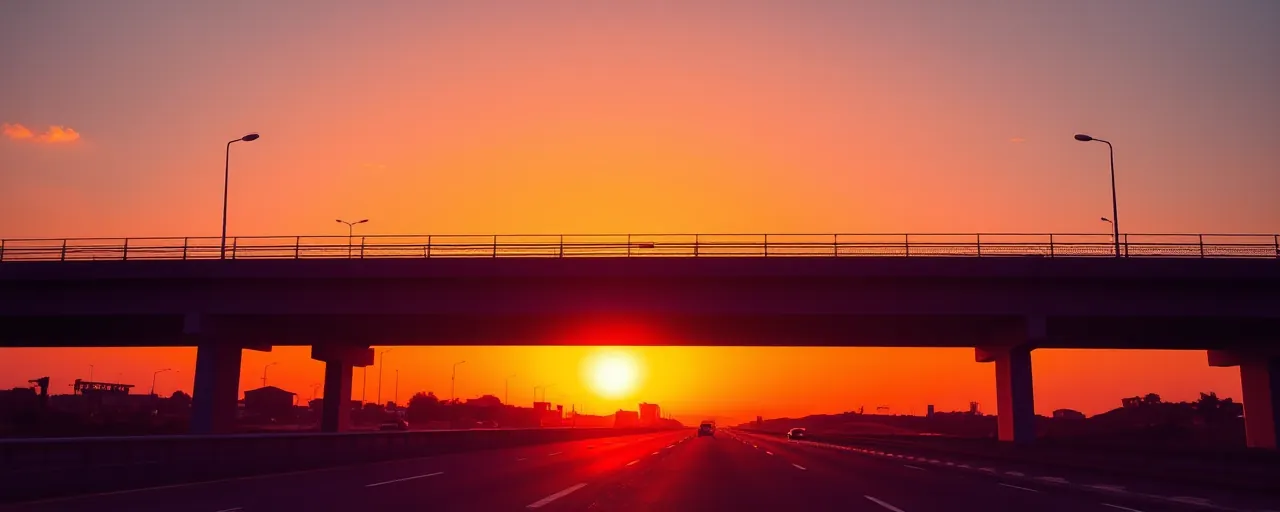A Road in Need of Repair
Every day, roughly 120,000 vehicles rumble along a five-mile stretch of the New England Thruway, known as I-95, threading through Westchester County. It’s a vital artery connecting Pelham Manor to Mamaroneck, but years of wear have left its pavement cracked and its bridges creaking. Now, New York State is stepping in with an $86.7 million plan to patch things up, a project that kicked off on April 7, 2025, with promises of smoother rides and sturdier crossings.
The announcement came straight from Albany, where state officials framed the effort as a lifeline for one of the Northeast’s busiest highways. Beyond the headlines, though, the real story lies in what this means for the people who rely on I-95, from daily commuters to local shop owners watching construction crews roll in. It’s a high-stakes fix, and not everyone’s convinced the benefits will outweigh the headaches.
Breaking Down the Blueprint
The project zeroes in on a stretch from milepost 4.0 to 8.8, tackling nearly 30 lane miles of battered roadway. Crews will rip out the worst sections of concrete, replace worn joints, and lay down a fresh asphalt overlay to ease the jolts drivers feel today. Twelve bridges tied to the corridor, including those over Centre Avenue in New Rochelle and Chatsworth Avenue in Larchmont, are also in line for a facelift, with six getting full rehabilitation and six others a surface refresh.
Safety upgrades round out the plan, with new guiderails, brighter lights, and sharper pavement markings set to guide drivers through the chaos of construction. Most of the heavy lifting will happen under cover of night, a move state officials say keeps daytime traffic flowing. With work slated to wrap by late 2026, the Thruway Authority has tapped DeFoe Corp., a Mount Vernon-based outfit, to get it done.
The Ripple Effect on Westchester
For the thousands who drive I-95 daily, the promise of a better road sounds appealing, but the reality of lane closures and traffic shifts has some bracing for frustration. Nighttime construction might spare rush-hour gridlock, yet detours and delays could still snarl commutes, piling costs onto drivers already stretched thin. Local businesses, meanwhile, face a mixed bag; daytime operations may dodge the bullet, but extended timelines could sap the patience of customers navigating the mess.
Historical projects like the Cross Bronx Expressway offer a cautionary tale, where improved highways boosted connectivity but left communities grappling with pollution and division. In Westchester, state lawmakers like Assemblymember Amy Paulin see the investment as a win, arguing it’ll cut vehicle wear and boost safety. Others, including business owners along the route, worry the short-term pain might linger longer than planned, echoing concerns from past highway overhauls.
Safety and Dollars in the Balance
Road safety sits at the heart of the project’s pitch. The Thruway boasts a fatality rate well below the national average, yet 2024 saw two workers killed and another injured in separate incidents, a grim reminder of the risks tied to highway upkeep. Advocates for worker safety, alongside state officials, point to expanded laws requiring drivers to slow down and move over near work zones, hoping to shield crews as they toil through the night.
Funding this overhaul falls to the Thruway Authority, which leans on tolls rather than tax dollars, with a 2025 budget pumping $477.3 million into system-wide upgrades. That’s a hefty jump from last year, fueled by tolls from in-state drivers and a third from out-of-staters. Economic analysts tie such investments to job creation, citing the MTA’s capital plans that churn out billions in output and tens of thousands of jobs. Still, inflation’s bite has some questioning whether the money will stretch far enough to keep New York’s roads from crumbling elsewhere.
Looking Back, Moving Forward
New York’s history with infrastructure tells a story of ambition and trade-offs. Decades ago, the Governor Thomas E. Dewey Thruway stitched the state into the national highway grid, a marvel of its time now showing its age. Today’s efforts build on that legacy, blending modern fixes with lessons from the past, like the Vision Zero push in New York City that slashed traffic deaths through smarter street design. Supporters say I-95’s upgrades could mirror those gains, making travel safer and smoother.
Yet the path ahead isn’t all clear. Night work might trim congestion, but residents near the corridor could face sleepless nights from the rumble of machinery, a tradeoff familiar to urban planners. As the project unfolds, its success will hinge on balancing these disruptions against the long-term payoff, a challenge state officials are betting they can meet.
What’s at Stake
By late 2026, Westchester’s slice of I-95 could emerge transformed, a lifeline renewed for the 120,000 who travel it daily. The $86.7 million price tag buys more than asphalt and steel; it’s a bet on safety, economic ripple effects, and a smoother ride. State leaders frame it as a no-brainer, part of a broader push to shore up New York’s aging infrastructure, from the Bronx to the Hudson Valley.
For the people living it, though, the stakes feel more immediate. Will the night crews finish on time? Can businesses weather the storm? And will the road truly be safer when the dust settles? Answers won’t come fast, but as the jackhammers fire up, one thing’s certain: this stretch of highway, and the lives tied to it, won’t look the same when it’s over.
